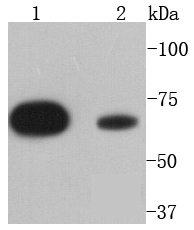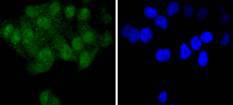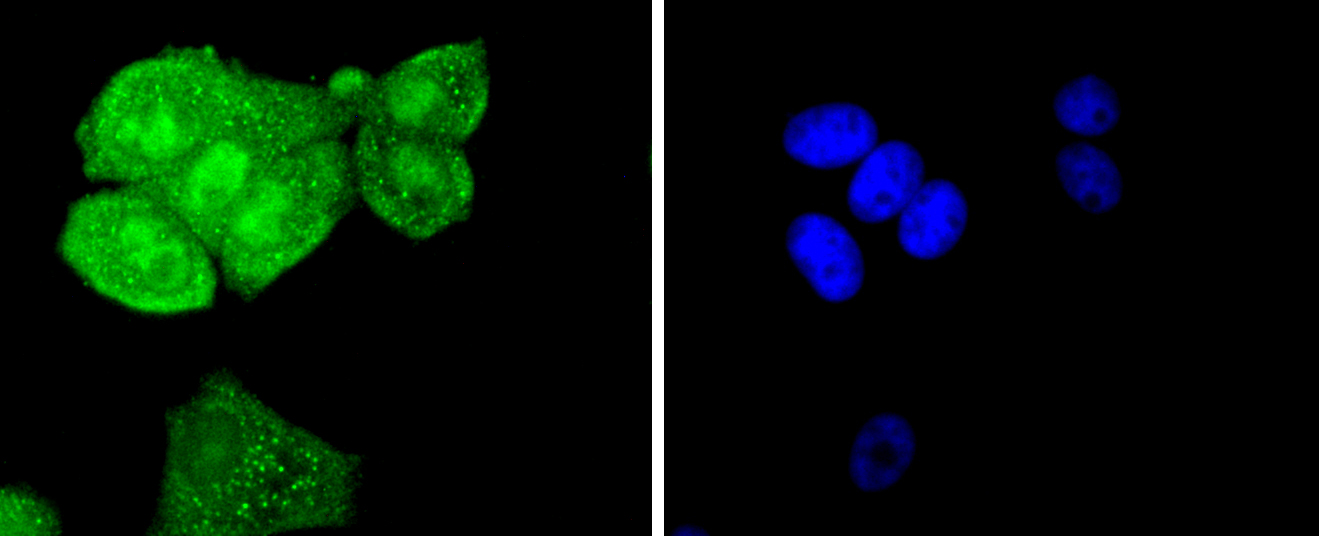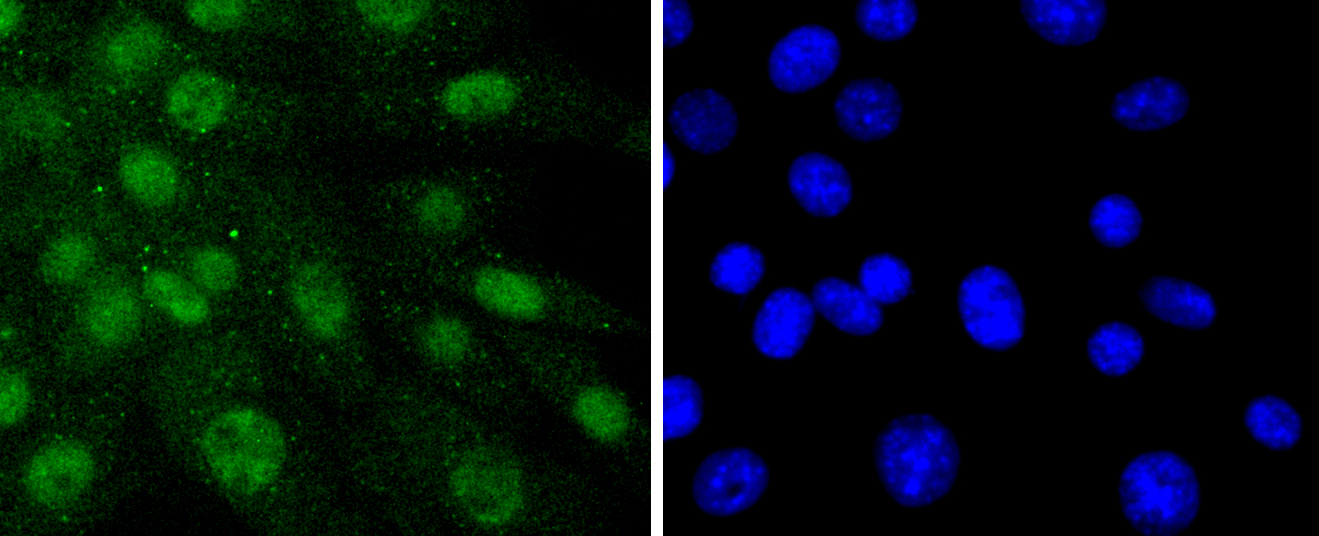Product Detail
Product NameSHP2 Rabbit mAb
Clone No.SN07-32
Host SpeciesRecombinant Rabbit
Clonality Monoclonal
PurificationProA affinity purified
ApplicationsWB, ICC/IF, IHC, IP
Species ReactivityHu
Immunogen Descrecombinant protein
ConjugateUnconjugated
Other NamesBPTP3 antibody CFC antibody JMML antibody METCDS antibody MGC14433 antibody NS1 antibody OTTHUMP00000166107 antibody OTTHUMP00000166108 antibody Protein tyrosine phosphatase 2 antibody Protein tyrosine phosphatase 2C antibody Protein tyrosine phosphatase non receptor type 11 antibody Protein-tyrosine phosphatase 1D antibody Protein-tyrosine phosphatase 2C antibody PTN11_HUMAN antibody PTP-1D antibody PTP-2C antibody PTP1D antibody PTP2C antibody PTPN11 antibody SAP2 antibody SH-PTP2 antibody SH-PTP3 antibody SH2 domain containing protein tyrosine phosphatase 2 antibody SHP 2 antibody SHP-2 antibody Shp2 antibody SHPTP2 antibody SHPTP3 antibody Syp antibody Tyrosine-protein phosphatase non-receptor type 11 antibody
Accession NoSwiss-Prot#:Q06124
Uniprot
Q06124
Gene ID
5781;
Calculated MW70 kDa
Formulation1*TBS (pH7.4), 1%BSA, 40%Glycerol. Preservative: 0.05% Sodium Azide.
StorageStore at -20˚C
Application Details
WB: 1:1,000-1:2,000
IHC: 1:50-1:200
ICC: 1:50-1:200
Western blot analysis of SHP2 on different lysates using anti-SHP2 antibody at 1/1,000 dilution. Positive control: Lane 1: Hela Lane 2: 293
Immunohistochemical analysis of paraffin-embedded human kidney tissue using anti-SHP2 antibody. Counter stained with hematoxylin.
ICC staining SHP2 in Hela cells (green). The nuclear counter stain is DAPI (blue). Cells were fixed in paraformaldehyde, permeabilised with 0.25% Triton X100/PBS.
ICC staining SHP2 in MCF-7 cells (green). The nuclear counter stain is DAPI (blue). Cells were fixed in paraformaldehyde, permeabilised with 0.25% Triton X100/PBS.
ICC staining SHP2 in NIH/3T3 cells (green). The nuclear counter stain is DAPI (blue). Cells were fixed in paraformaldehyde, permeabilised with 0.25% Triton X100/PBS.
The steady state of protein tyrosyl phosphorylation in cells is regulated by the opposing action of tyrosine kinases and protein tyrosine phosphatases (PTPs). Several groups have independently identified a non-transmembrane PTP, designated SH-PTP1 (also known as PTP1C, HCP and SHP), which is primarily expressed in hematopoietic cells and characterized by the presence of two SH2 domains N-terminal to the PTP domain. SH2 domains generally mediate the association of regulatory molecules with specific phosphotyrosine-containing sites on autophosphorylated receptors, thereby controlling the initial interaction of receptors with these substrates. A second and much more widely expressed PTP with SH2 domains, SH-PTP2 (also designated PTP1D and Syp), has been identified. Strong sequence similarity between SH-PTP2 and the Drosophila gene corkscrew (CSW) and their similar patterns of expression suggest that SH-PTP2 is the human corkscrew homolog.
If you have published an article using product 49096, please notify us so that we can cite your literature.
et al,Grass carp (Ctenopharyngodon idellus) SHP2 suppresses IFN I expression via decreasing the phosphorylation of GSK3 beta in a non-contact manner
, (2021),
PMID:
34265416







 Yes
Yes



